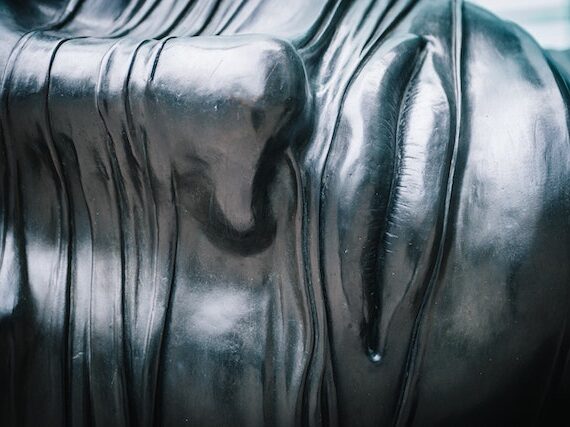History of Gold and Silver
Refining precious metals is a complex process, one that requires expertise and precision. It’s an art form as much as it is a science; the techniques used have been developed over centuries by those with a passion for pushing the boundaries of what can be achieved.
In this article, we’ll explore some of these silver IRA companies in detail, including their history and evolution. We’ll look at how they are employed today to create objects of beauty and value from raw materials.
So let’s dive into the fascinating world of precious metal refining!
History Of Precious Metal Refining
Precious metal refining is one of the oldest and most important crafts in human history. It was first developed by ancient civilizations, especially those near rivers and streams with abundant resources of gold found in nature.
Refining processes were used to separate these precious metals from other materials like stones or dirt and purify them for use in jewelry, coins, weapons, and tools.
The earliest known method of refining gold dates back more than 5500 years ago when it was done through rudimentary techniques such as crushing ore into a powder then heating it until all undesired elements evaporated away leaving behind only pure gold.
As time progressed so did the technology available which allowed for more advanced forms of refining such as cupellation which involves the use of heat and chemical reagents to reduce impurities.
Methods have changed over the centuries but the main objective has remained constant: To get rid of any contaminants that may affect the quality or value of a piece being worked on while also separating out any desired components that may be valuable themselves like silver or platinum.
This process can be done manually using simple tools or industrially using large automated machines depending on what is necessary for a particular job.
Today there are many companies specializing in precious metal refining services ranging from individual artisans who work with small batches at home to international corporations operating multi-million dollar factories capable of handling tons of material every day.
Regardless of size though they all strive towards achieving one goal – producing high-quality products that meet customer expectations.
Overview Of Refining Processes
From the ancient art of alchemy to modern-day industrial processes, refining precious metals remains a complex and intricate process. The goal is always the same: to make sure that pure gold, silver or other valuable minerals are separated from all impurities and contaminants.
To achieve this goal, there are several steps that must take place during the metal refining process. The first step is typically melting down the raw ore into either a liquid or solid form. This can be done using furnaces or chemical reactions depending on what type of material is being processed.
Once melted down, it’s time for purification. Here, different chemicals are added to extract any unwanted elements from the molten material while also removing coloration caused by oxidation. In some cases, gravity separation may also be used at this stage as well if needed.
Next comes alloying which involves adding various combinations of metals together until desired characteristics such as strength or hardness have been achieved. Finally, after cooling and forming the product into its final shape, polishing occurs where abrasives are used to buff out any imperfections in order to reveal its natural luster and shine.
This entire procedure has been perfected over centuries but with technology steadily evolving, refinements continue to be made today so that ever more efficient methods can be employed when dealing with precious metals mining operations.
Common Techniques Employed
Precious metals refining is an intricate process, and there are many techniques employed to refine these valuable elements. From electrolysis to chemical dissolution, the methods used in precious metal refinement vary depending on the type of ore being processed.
In this section we will explore some of the common techniques found in precious metal refining.
One method that can be used for gold ore is cyanide leaching. This technique involves adding a solution containing cyanide into the ore, which allows small particles of gold to dissolve into liquid form while leaving other waste material behind. Once the desired amount has been dissolved, it can then be further purified by electroplating or smelting processes.
Another common technique is called fire assay, which is commonly used with silver ores. This procedure begins with crushing the ore into fine powder before mixing it with fluxes like borax and sodium carbonate to help separate out any impurities from the desired metal. It is then heated until molten, at which point it can be skimmed off as slag and poured into moulds where it cools and solidifies into bars known as bullion.
Finally, mercury amalgamation is often utilized when extracting gold from its ore source. The powdered ore is mixed together with mercury, which binds itself to the gold molecules within the mix creating a paste-like substance called an amalgam. The amalgam can then be separated from remaining materials using simple distillation methods such as heating up over a flame or boiling in water to leave only pure gold behind.
Advantages Of Refining Precious Metals
Now that we have discussed the common techniques employed in precious metals refining processes, let us turn our attention to some of their advantages.
Refining is a necessary step for many industries because it ensures the purity and quality of the end product. It allows manufacturers to create products with consistent specifications. Furthermore, refined metals can be used for more precise engineering applications, as they are more malleable than raw materials.
Refining also improves safety by removing harmful contaminants from surfaces or products before use. For example, when gold jewelry is refined, any dirt or impurities present on its surface will be eliminated through the process. This makes it easier to identify fake pieces and increases consumer confidence in their purchases. Additionally, since alloys are often used in jewelry production, refining helps ensure that these components maintain their desired composition throughout manufacturing.
The cost savings afforded by refining are another major benefit – particularly when dealing with high-value metals such as platinum or palladium. By eliminating impurities early on in the process, refiners can reduce waste during subsequent steps and lower overall expenses associated with producing a finished item. Not only does this help businesses save money but it also reduces pollution caused by discharged materials into nearby water sources or landfills due to unrefined ore extraction methods.
Finally, precious metal refining allows producers to meet sustainability goals without compromising product performance or quality standards; not only does it lead to cleaner operations but also enables them to maximize material utilization rates while minimizing environmental impact over time. As such, it has become an important part of many companies’ efforts towards ecological responsibility and conservation practices within their supply chains.
Conclusion
At the end of the day, precious metals refining is an important process to help us get the most out of our resources.
Refining allows us to efficiently separate and purify these valuable commodities so they can be used in various industries, from jewelry making to electronics production.
The techniques employed for this process have been around for centuries and have been refined over time as technology has advanced.
Common processes include smelting, electrolytic reduction, chemical precipitation, aqua-regia leaching and more.
Each method provides its own set of advantages such as higher purity levels or lower environmental impact.
Regardless of which one you choose, it’s essential that you understand all aspects of the process before starting any project involving precious metals refinement.…




